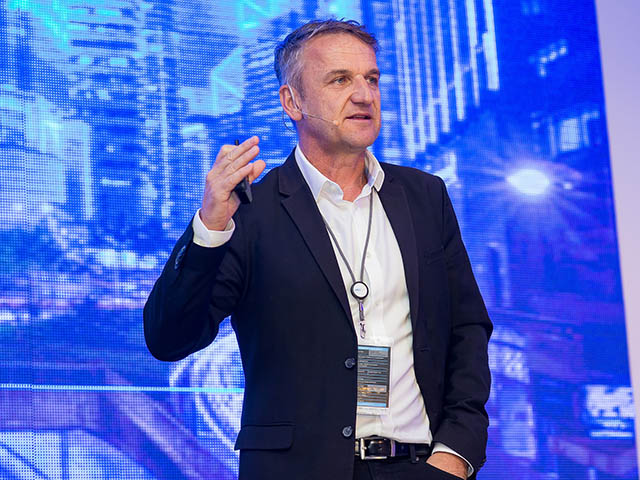How would you define collaboration? In essence, it means to work together, but at the broadest sense collaboration defines the ability for ideas to be heard, shared and refined. This might happen during a meeting specifically aiming for collaboration or it could result from a passerby overhearing something they can contribute towards.
“Companies of our size always have duplication of effort,” said Dawn Longacre, Dell’s Global Workplace Strategist. “We don’t want to work against each other. Our big hope is to combine people who might not normally interact.”
This desire is catalysing a wave of improvement across Dell Technologies offices and campuses. Accepting that office desks are no longer at the centre of the business world, Dell Technologies is adopting new and creative ways to improve how - and where - its people work. It can serve as a blueprint for other companies to follow and addresses two major areas: devices and locations.
The new device paradigm
Modern devices are not locked to desks either. Two-in-one notebooks and smartphones have given people more mobility, while broadband connections always keep them virtually present with their company. In this area, there are three broadly defined working personas: those who largely work at desks, those who move around the corridors from one meeting to another, and those who work remotely most of the time.
To create a collaborative environment you need to understand these roles and how to enhance them, explained Chris Buchanan, Director of Client Solutions at Dell Technologies:
“Small touches can boost productivity and collaboration opportunities. Touches such as dual screens for desk workers or flip-over touch screens that work well for meeting presentations: these reduce the effort required to interact with information and share ideas with other people. I meet a lot of businesses that really want to improve factors like collaboration, but they don’t get the right devices for the right people. They think they are saving money by ignoring this, but they are actually inhibiting productivity.”
Understanding the ways devices have expanded “teaming” and working together is key to creating collaborative environments. As mentioned earlier, the corporate world no longer orbits around desks. Dell Technologies has grabbed this by the horns and developed some radical new spaces.
Space to meet
Fewer people need to stick to a 9-to-5 routine. Dreaded commutes and the demands of modern life have prompted changes in behaviour, such as working remotely for certain periods of the day. A coffee shop today can be as good as any office - except for one thing.
Humans are social creatures and things happen when humans meet. So there will always be a need for face to face interactions. This is what Dawn Longacre and her team made central to their design strategy.
“Once an employee is here, we set up a lot of opportunity for ad-hoc happenstance meetings,” said Dawn. “If I’m walking down the hall and see someone I want to catch up with, we can grab a seat, talk for a few minutes and that way we’ve saved twenty emails.”
This is accomplished by creating ‘collaboration parks’: areas within buildings specifically made to be inviting to arranged or impromptu meetings:
- Lounge areas create comfortable open spaces for organic and open meetings.
- Those wanting a private conversation can seat themselves at restaurant-style booths that are cosy and more isolated.
- Every meeting spot has a mounted screen that can be used to amplify presentations.
- Whiteboard walls fringe some areas. These can be written on, plus they offer chances for ‘purposeful overhearing’ to reduce effort duplication.
- Gaming areas let people relax while they can still chat and exchange ideas.
The changes are intended to make Dell Technologies offices more vibrant and creative. A recent Stanford study found that people working collaboratively were 64% more likely to stick to the tasks than solitary workers. It also revealed that companies promoting collaboration were five times more likely to be high-performing.
“I think something we’ve forgotten, or maybe never truly appreciated up to now, is that people are the business,” said Buchanan. “It’s not a building or software or targets on a spreadsheet. You need people to give their collective best to succeed as a company. Making changes for the sake of collaboration isn’t some new age business trend. It makes great business sense that I can see at work in Dell Technologies and at the customers we’ve helped on this journey.”
Perhaps the timing of this change isn’t coincidental. Millennial and Gen-Z workers value face-to-face interactions very highly. But that isn’t going to happen if an office offers a collection of desks, some equipment, and leaves collaboration to the watercooler. To improve business, start giving people space to work with each other on their terms.





